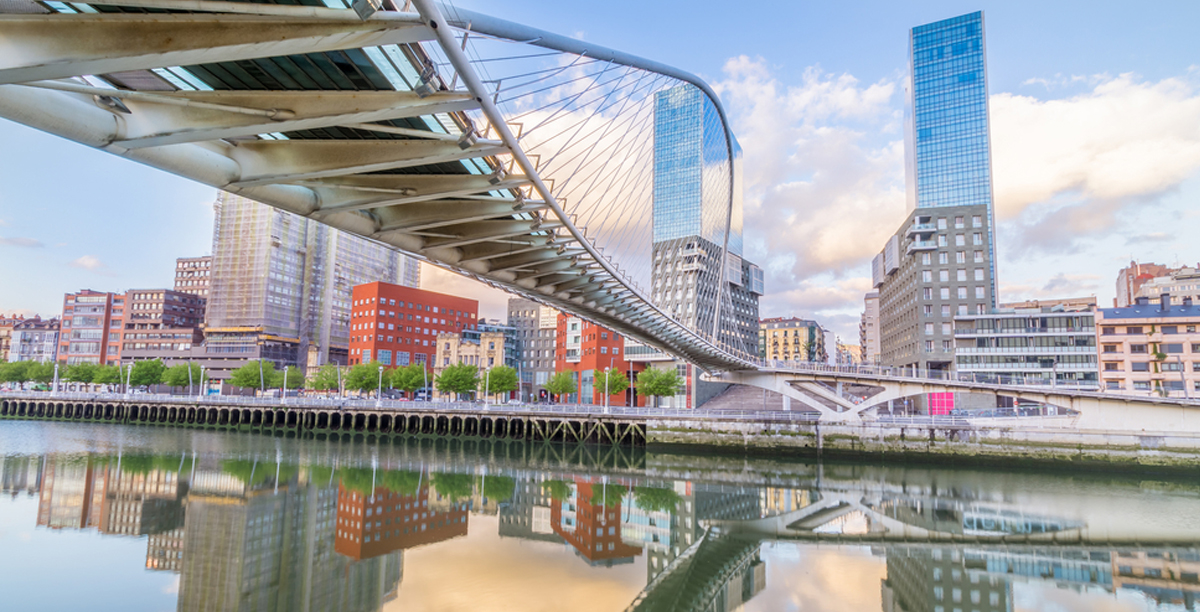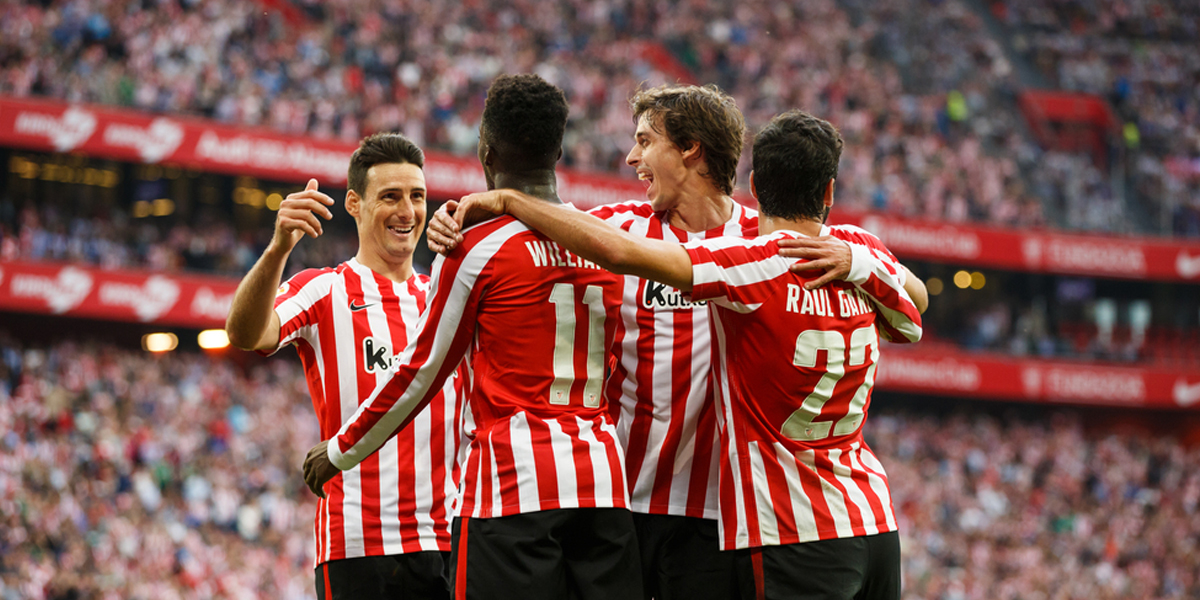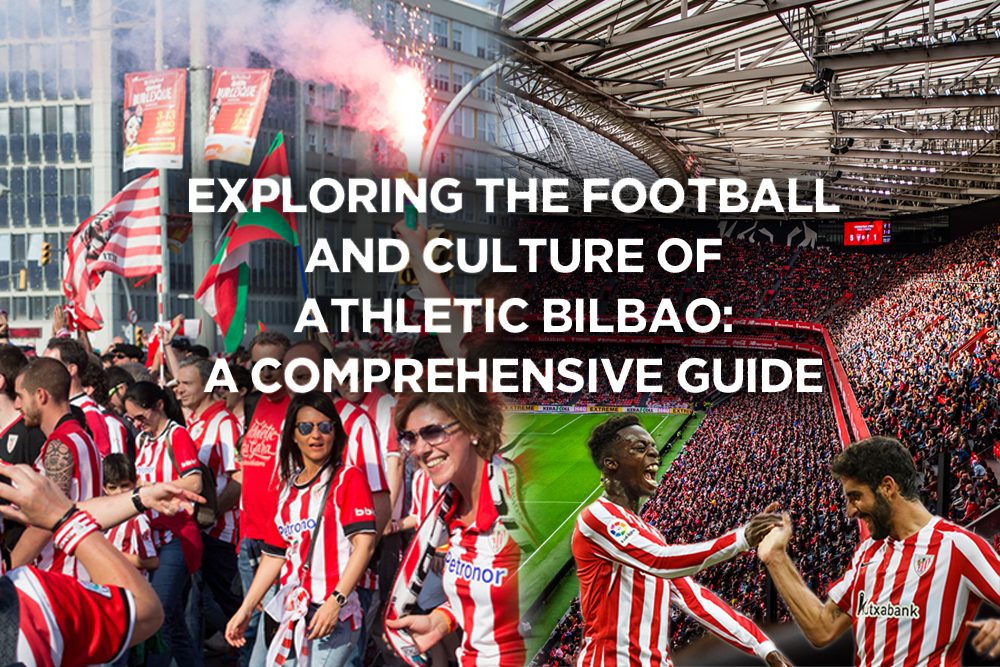The largest city in the Basque Country, Bilbao, is home to Athletic Club, better known as Athletic Bilbao, a Spanish football team established in 1898. With eight titles to their name, it is one of the oldest and most successful clubs in Spanish football. With 23 cup trophies, Athletic is second only to Barcelona in the list of most Copa del Rey titles. In terms of league and cup trophies won, this also makes it the most prosperous football club in Basque country.
Together with Real Madrid and Barcelona, the club is one of the three founding members of the Primera División to have never been relegated from the top league since its foundation in 1929. These three clubs, along with Osasuna, are the only four professional clubs in Spain that are run and owned by club members rather than sporting organizations. Athletics’ main rivals are Real Sociedad, against whom it contests the Basque derby, and Real Madrid, due to sporting and political identity. A less intense rivalry also exists with Barcelona because of their shared historical significance.
SAN MAMES STADIUM
Athletic Bilbao plays its home games at San Mamés Stadium, named after a chapel close to it, inside a charity house. Tradition says that Saint Mammes was an early Christian who was thrown to the lions by the Romans. That’s why Athletic players are also known as Los Leones (The Lions).
The previous San Mamés Stadium, which had been in use since 1913, was replaced by this one. The first match at the new San Mamés took place on September 16, 2013, Athletic Bilbao then hosted Celta Vigo. The stadium was renovated in 2016, bringing its capacity to 53,331.

BILBAO
The largest city in the province of Biscay and the entire Basque Country, Bilbao is located in northern Spain. Bilbao is the tenth largest city in Spain, with a population of 346,843 as of 2019. With 1,037,847 residents, the Bilbao metropolitan area is the most populated in northern Spain. Moreover, Bilbao is the main urban area in what is defined as the Greater Basque region.
One of Spain’s best and most underrated city getaways is Bilbao. Bilbao has a unique character and tons of things to see and do. Little green hills surround Bilbao, providing a magnificent backdrop for this city’s scenery. You can’t help but fall in love with the city for its top-notch museums, mouth-watering cuisine, interesting history, and welcoming residents.
The enigmatic Basque language is everywhere, but everyone also speaks Spanish and you’ll be fine getting by in English, as there are plenty of speakers here.
Thing to see or to do:
- Visit The Guggenheim Museum
- Walk around The Casco Viejo (Old City)
- Eat Pintxos in street bars
- Have a boat cruise down the Ría de Bilbao
- Climb the top of the Mount Artxanda

INTERESTING FACTS TO KNOW BEFORE GOING TO A ATHLETIC BILBAO MATCH
Athletic Bilbao fans form a very close-knit community. An interesting experience is to visit local fan gathering spots and spend time among the supporters before the match starts to feel this unique Basque vibe. There is a big quantity of supporters every weekend and you will feel the love for this team in a lot of corners to the city. The best places to visit before a game are in Licenciado Poza street (called by locals “Pozas”). This street is one of the most popular places for having a wine and a pintxo, before and after the match. But these are three of the best bars out of that street that I can recommend for international football fans:
- La Granja – The second oldest bar in Bilbao is a great option to enjoy your time before a game. You can enjoy here great pintxos and drink local txakoli white wine whilst enjoying the unique atmosphere with local fans.
- Ein Prosit – This bar, famous between locals for the sausages that his German owner has been making for years, is a great place for socialising with Athletic Bilbao fans. Great food and amazing atmosphere.
- Covent Garden – spacious bar with a huge selection of pintxos and a great pre-match atmosphere.

La Gabarra
Athletic Club has its “cathedral” (San Mames Stadium), its colours (red and white), its “lions” (its players), and also its Gabarra (a river barge). It is a unique and unusual manner for it to celebrate its titles with its fans. Some teams take an open-top bus ride to celebrate their triumphs. But, Athletic Club does it by sailing its Gabarra, a river barge rich in history, up the river estuary, the Ría de Bilbao. It all started back in 1983, when Athletic Club was crowned league champion for the seventh time. The club had not won that championship in twenty-seven years, and it had been ten years since they had received any sort of trophy. Bizkaia was through a difficult, melancholy period while its industry was being completely transformed and there was a significant unemployment rate. Nonetheless, Athletic Club was able to give its supporters a victory that would make them happy. Cecilio Gerrikabeitia, one of the club’s directors, who had already seen many of Athletic Club’s victories, believed that on this particular occasion, the traditional appearance on the balcony at City Hall would not be enough. In the past, barges were a crucial kind of watercraft for local business. They are a type of flat-bottomed, motorless boat that must be towed and is used to transport iron ore. Consequently, in 1983, a barge was given a new name: Athletic. However, it would no longer transport iron ore; instead, it would become the guest of honour when Athletic celebrated winning another title.
The Basque Derby
Athletic Bilbao and Real Sociedad’s matches are always fiercely contested. Although the passion and noise fervour the fans create inside San Mamés and the Reale Arena is tremendous, unlike many other derbies, the game is typically played in a friendly environment.
Whether the match is in San Sebastián or Bilbao, it is typical to see friends, partners, and relatives seated together wearing opposing shirts, cheering on their team to victory but always treating each other fairly. This does not imply that the game is any less significant, but both teams clearly believe that respecting one another is the greatest way to demonstrate their local pride. Fighting is uncommon in the Basque Country because of the strong sense of community there, which is a lesson that people all over the world may take away.
This respect was emphasised in 1976 when a historic moment in Spanish football occurred. Inaxio Kortabarra and José Angel Iribar, the opposing captains, displayed the illegal Basque flag together before the match as a sign of solidarity.

CANTERA POLICY
The unwritten “Cantera” rule, which has been in place at Athletic Bilbao since 1912, states that the club will only sign players who were born in the traditional regions of the Basque Country or who developed their football skills at a Basque club. Youth players have occasionally been invited to join because of ancestor connections to the area, but no senior players have been signed solely because of their Basque origin. The club’s motto is “Con cantera y afición, no hace falta importación” (in English: “With homegrown talent and local support, there’s no need for imports”). Although it has been criticised as being discriminatory for non-Basques, both from other areas in Spain and from other parts of the world, the policy, which is tied to Basque nationalism, has been praised as a strategy to foster local talent. Throughout history, Athletic Bilbao has been one of the most important institutions shaping the Basque national consciousness, and its academy has developed top talent generation after generation.

ATHETIC BILBAO LEGENDS
Telmo Zarra
Athletic Bilbao’s greatest player. After playing for Erandio for one season, Zarra signed with Athletic. During his 15 years with the team, he scored a lot of goals and took home the Pichichi Award for La Liga’s top scorer six times. During his career, Zarra scored a total of 251 league goals, a Spanish record that lasted nearly six decades. He still holds the record for most goals in the Copa del Rey with 81. He received 20 Spain caps and scored 20 goals.
Rafael Moreno Aranzadi, “Pichichi”
The “Pichichi” award for La Liga top-scorer is named after him. He played 170 games for Athletic Bilbao and scored 240 goals. He won four Copa del Reys. Pichichi was a part of the first ever Spanish national squad, which competed in the 1920 Summer Olympics in Belgium. In one month, he received five senior caps. On August 28, he made his debut in a 1-0 victory over Denmark. He retired after the Olympics. He holds the record for most goals in a Copa del Rey final (4 goals).
Fernando Llorente
Llorente, also known as “El Rey León,” came from Athletic Bilbao’s academy. Over a span of 8 seasons, he showcased his skills with the senior team and contributed to their progress, leading them to the Europa League Final in 2012. After a successful stint, he moved to Juventus in 2013, where he went on to clinch three consecutive Serie A championships. In addition, he played for two other English teams, Swansea and Tottenham Hotspur, where he continued to leave his mark. His impressive career also includes winning the European Championship in 2012 and the World Cup in 2010 with the Spanish national team. Notably, he played a crucial role in advancing his team to the 2015 Champions League Final.
Txetxu Rojo
Athletic Bilbao footballer Txetxu Rojo was also a club legend. He is the second-most appearances in the Basque side’s history, only behind José Ángel Iribar. In 1969 and 1973, he won two Copa del Rey awards. During his time there, he played with his brother José Ángel, with the pair being thus referred to as ‘Rojo I’ and ‘Rojo II’. Although he received 18 total caps for Spain, he never participated in a significant international competition.
